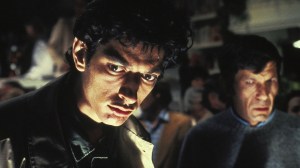Decades after his first appearance in Spider-Man, beloved actor Willem Dafoe returned in Spider-Man: No Way Home to reprise his role as the Green Goblin. it’s an experience that he seemed to revel in, and fans were excited to have the definitive Spidey villain back on the screen. Still, it’s worth looking back in time and figuring out what it was that made him want to do the film in the first place. To that end, Variety has put together an oral history of the film, and the answer is pretty simple: according to Dafoe, he was attracted by Evil Dead creator Sam Raimi, and by the relatively novel idea of doing a big-budget superhero film.
Videos by ComicBook.com
The actor, who was already an acclaimed actor for roles like Platoon by that point, told Variety that the reads he did for Spider-Man were likely the last time he actually auditioned for a part and put himself on tape.
“The challenge was always to not make the Goblin ridiculous, make him a little scary,” Dafoe explained. “I think, because technology was involved, they went with a very angular, very modern kind of look, more like an armor. Some of the early tests I saw, the Goblin looked more like a Halloween mask, this kind of puke green with bug eyes. It was kind of silly looking.”
Dafoe and Raimi also talked about the mask/helmet that Dafoe wore in the films. One of the most difficult masks to express emotion in, Goblin’s performance had to play against an equally featureless Spider-Man mask, since at that time there wasn’t the digital technology to have the eyes “adjust” like Tom Holland’s does.
“I would sometimes communicate to the actors, ‘I need an additional gesticulation of your fingers here to explain your helplessness,’” Raimi said. “Or in the case of sadness, ‘Can I have a slight tilt to the mask down.’ It would be a little bit more like theater. And I would be the audience watching the scene from row 16, where the subtleties of the voice weren’t always enough. It sometimes had to be demonstrated through a gesture or movement or the way a character stands or sits.”
“It was also a beautiful combination of very comic stuff and very dramatic stuff, and sometimes those things were weaved together in the same scene,” Dafoe added. “Even though I wasn’t really in tune with knowing what comic books were, I did come from a theater tradition that appreciated a different kind of performance style than naturalism. And I saw the opportunities in having this kind of monster character, and then have it grounded with a certain psychological portrait of this tortured guy.”
You can check out the official synopsis for Spider-Man: No Way Home below.
For the first time in the cinematic history of Spider-Man, our friendly neighborhood hero is unmasked and no longer able to separate his normal life from the high-stakes of being a Super Hero. When he asks for help from Doctor Strange the stakes become even more dangerous, forcing him to discover what it truly means to be Spider-Man.








